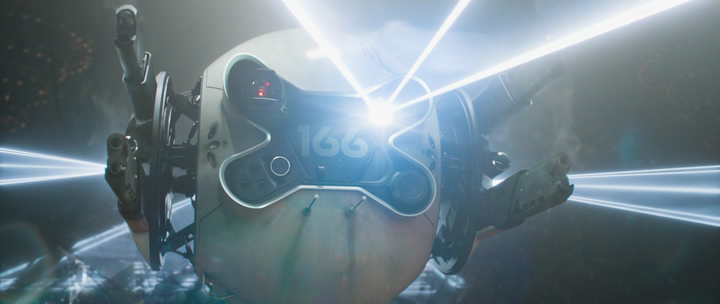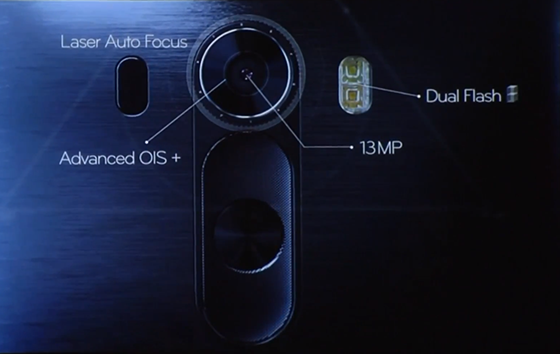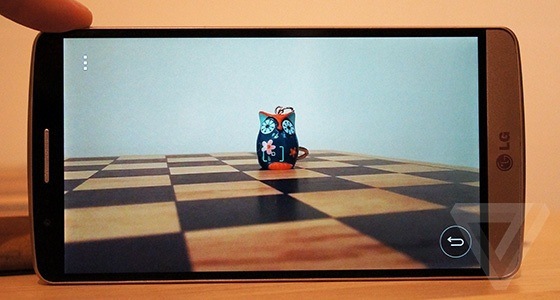LG has rearranged laser autofocus on its smartphone with a vacuum cleaner
Presented to the market on Tuesday, the Korean flagship LG G3, as expected, had a number of interesting characteristics, but the most striking innovation is laser autofocus. The idea is that at the time of starting the camera, the built-in laser scans the space with a conical beam in the infrared range invisible to the human eye, calculating the distance to the subject. It looks something like this:

or like this:

Adjusted for the fact that you can’t actually see it with the naked eye. By the way, I would look at how the G3 autofocus looks in the infrared.
The LG G3 uses a low-power Class 1 laser . The emitter divides the beam into fragments, creating several focal points. The low power of the laser makes it safe for people, but useless over long distances. The advantage of the laser is manifested in poor lighting conditions and / or the proximity of the subject.
It is curious that LG did not develop this technology for the mobile division at all, but for its Hom-Bot robotic vacuum cleaners. True, she never got to the vacuum cleaners, but the engineers of the LG mobile division picked up, shook off and built it into what they themselves call the fastest mobile camera to date, using a laser that provides AF guidance in 0.276 seconds, writes The Verge .

At the same time, laser autofocus works in combination with traditional autofocus and other programs such as face recognition, which insure and supplement it, for example, over long distances.
Another publication draws attention to the super-laconic camera interface:

- which I would write down - the controls should always be at hand (oh, these designers). But the engineers worked as they should.
I wonder why the vacuum cleaner didn’t get a laser?


or like this:

Adjusted for the fact that you can’t actually see it with the naked eye. By the way, I would look at how the G3 autofocus looks in the infrared.
The LG G3 uses a low-power Class 1 laser . The emitter divides the beam into fragments, creating several focal points. The low power of the laser makes it safe for people, but useless over long distances. The advantage of the laser is manifested in poor lighting conditions and / or the proximity of the subject.
It is curious that LG did not develop this technology for the mobile division at all, but for its Hom-Bot robotic vacuum cleaners. True, she never got to the vacuum cleaners, but the engineers of the LG mobile division picked up, shook off and built it into what they themselves call the fastest mobile camera to date, using a laser that provides AF guidance in 0.276 seconds, writes The Verge .

At the same time, laser autofocus works in combination with traditional autofocus and other programs such as face recognition, which insure and supplement it, for example, over long distances.
Another publication draws attention to the super-laconic camera interface:

- which I would write down - the controls should always be at hand (oh, these designers). But the engineers worked as they should.
I wonder why the vacuum cleaner didn’t get a laser?

